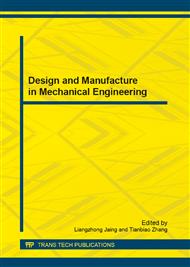p.294
p.300
p.304
p.310
p.316
p.324
p.330
p.336
p.341
Innovative Hydraulic Power Take-Off Construction and Performance Tests for Wave Energy Conversion
Abstract:
This document describes and demonstrates the features of a new innovative hydraulic Power take-Off (PTO) to be used for Wave Energy Conversion. This device is able to transform low frequency oscillating movement into a continuous high frequency angular speed, absorbing high fluctuated torque at the input shaft, which can reach up to 8000Nm. Moreover, the major breakthrough of this device is that it can control the braking torque through the modification of some geometrical parameters, L and R, and through the activation of more than one hydraulic cylinder together with the pressure. The output shaft of the PTO is able to rotate at different continuous rated speed through the actuation on a specific control valve at the inlet of the hydraulic motor. Tests to check the behavior of the PTO related to the smoothening of the power output and concerning the time needed to increase the high pressure and the time available after the accumulation of some quantity of energy in different initial conditions are presented.
Info:
Periodical:
Pages:
316-323
Citation:
Online since:
September 2013
Authors:
Price:
Сopyright:
© 2013 Trans Tech Publications Ltd. All Rights Reserved
Share:
Citation:


